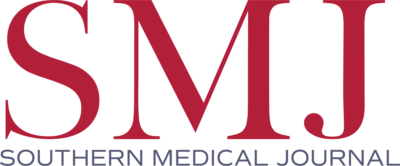The Southern Medical Journal (SMJ) is the official, peer-reviewed journal of the Southern Medical Association. It has a multidisciplinary and inter-professional focus that covers a broad range of topics relevant to physicians and other healthcare specialists.
SMJ // Article
Original Article
Sterile Water as an Irrigating Fluid for Transurethral Resection of the Prostate: Anesthetical View of the Records of 1600 Cases
Abstract
Objectives: Absorption of the fluid used for bladder irrigation during transurethral resection of prostate (TURP) may disturb the circulatory system and lead to clinical symptoms known as the transurethral resection syndrome. The purpose of this study was to evaluate the changes in electrolytes in patients who had undergone TURP.
Methods: For all the cases with benign prostatic hypertrophy enrolled in the present study, TURP was performed as recommended in Miller's Anesthesia, the sixth edition. Sterile water was used as an irrigating fluid for bladder washing. Laboratory tests were performed before and immediately after the surgery.
Results: No statistically significant changes were reported in the serum sodium, blood urea nitrogen, creatinine, and hematocrit. The most common complications were hypotension (8.3%), hypertension (7.8%), nausea (6.4%), and vomiting (2.8%). Hyponatremia, decreased hematocrit, and increased blood urea nitrogen/creatinine were rarely reported (2.5, 1.0, and 0.9%, respectively).
Conclusion: Sterile water has been shown to be a safe irrigating fluid for TURP.
Key Points
* Absorption of the fluid used during TURP may disturb the circulatory system and lead to transurethral resection syndrome.
* Using sterile water as irrigating fluid, there were no statistically significant changes in serum sodium, blood urea nitrogen, creatinine, and hematocrit before and after the operation.
* Hypotension, hypertension, nausea, and vomiting were the most common complications; hyponatremia, decreased hematocrit, and increased blood urea nitrogen/creatinine were rarely reported.
This content is limited to qualifying members.
Existing members, please login first
If you have an existing account please login now to access this article or view purchase options.
Purchase only this article ($25)
Create a free account, then purchase this article to download or access it online for 24 hours.
Purchase an SMJ online subscription ($75)
Create a free account, then purchase a subscription to get complete access to all articles for a full year.
Purchase a membership plan (fees vary)
Premium members can access all articles plus recieve many more benefits. View all membership plans and benefit packages.

